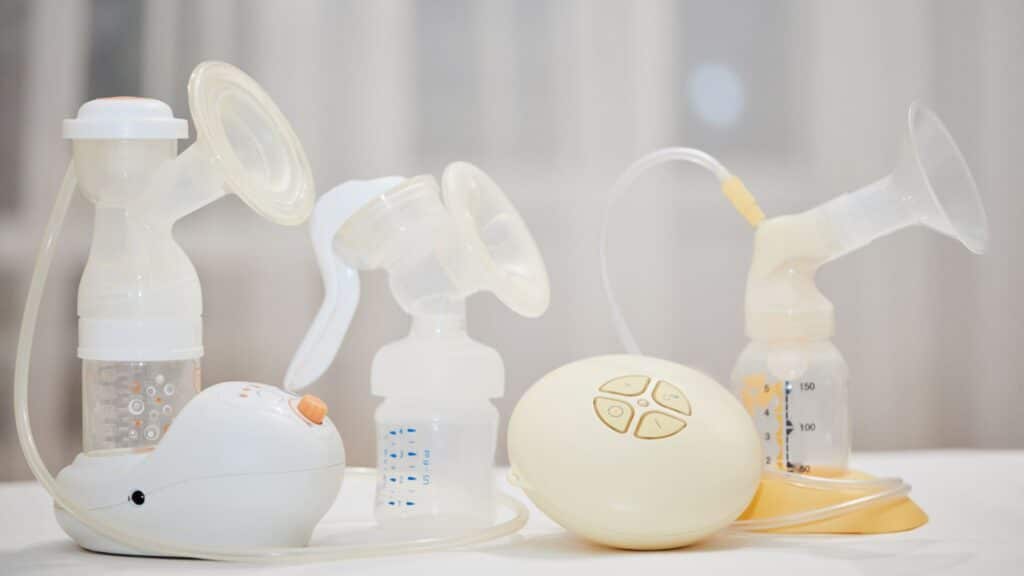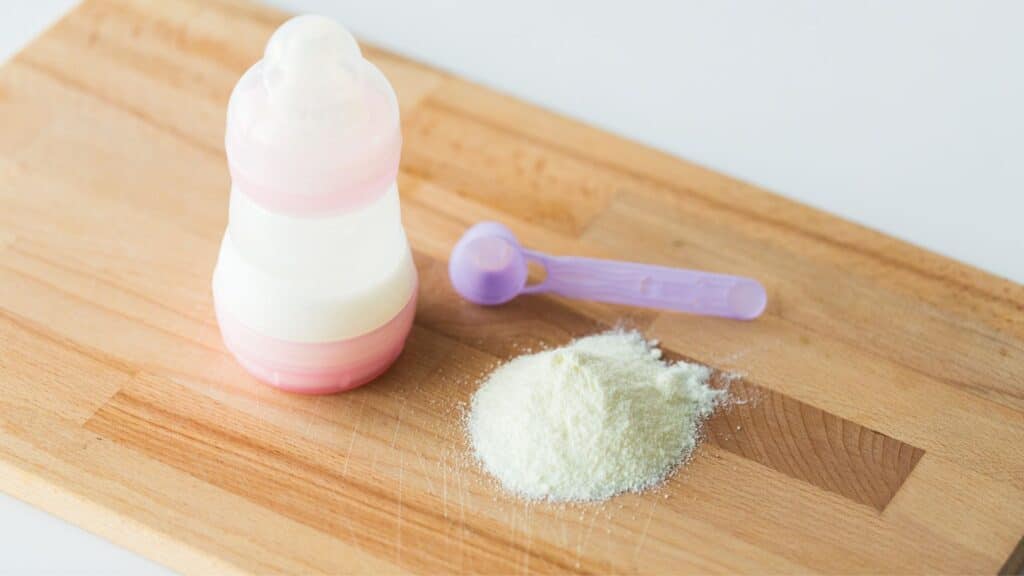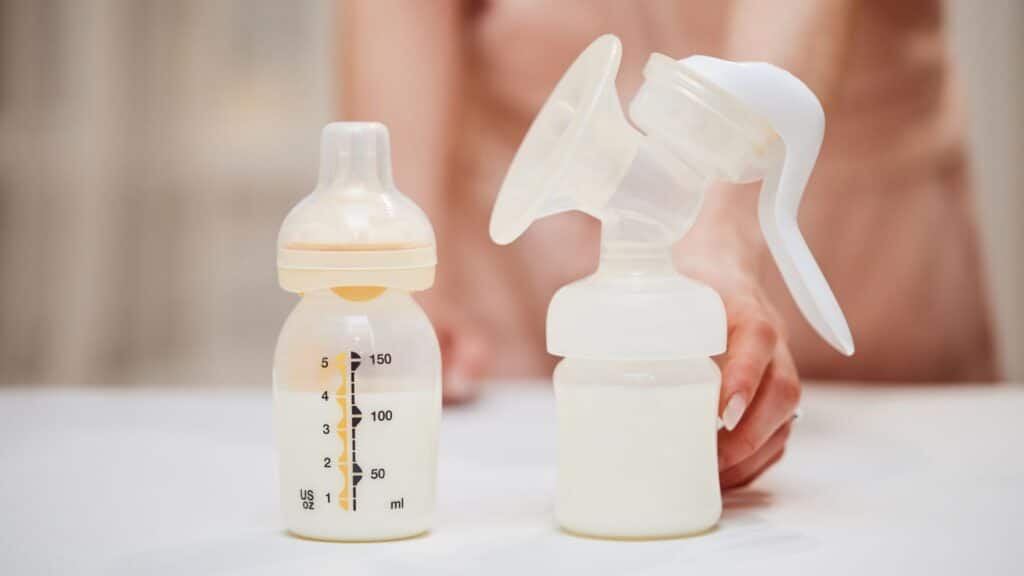Breastfeeding can be a great way to nourish a newborn baby. However, for some new mothers, it may not always be possible or practical to exclusively breastfeed their baby. This is where combination feeding comes in – a method of feeding your baby with both breast milk and formula milk.
While it can be a convenient solution for many new moms, it can also be a confusing and overwhelming process. How much formula should you give? How do you store breast milk and formula milk together? These are just a few questions that come to mind.
In this blog post, we’ll share expert tips and insights on how to successfully mix baby formula and breast milk to help make this process easier for you.

Why Combination Feeding Might Be Right for You
Combination feeding or feeding your baby breast milk and formula from birth is a popular choice for new parents. It’s a great way to ensure that your baby gets the nutrition he or she needs, but it does come with some challenges.
Combining breast milk with formula is a great way to make sure your baby is getting an adequate supply of nutrients and calories, but it also means that you have to spend time preparing each bottle separately and mixing them together. This can be especially challenging if you’re exclusively breastfeeding and haven’t yet mastered the art of pumping at work (if you’re planning on doing so).
Some parents find that combining breast milk and formula also makes it difficult to figure out how much milk their babies need. Some babies are able to drink more than others without getting full which means they might take in too much formula if they’re not monitored carefully.
But this isn’t all bad news!
There are plenty of benefits to mixing breast milk and formula, too. Combination feeding allows your body time to adjust after giving birth while giving you some extra help during those first few weeks while you get back into the groove of life with a newborn. And finally, there’s no denying that it’s convenient.

Choosing the Right Formula for Your Baby
Making the choice to breastfeed your baby is one of the most important decisions you’ll ever make. It’s not just about what’s best for you, though it’s also about what’s best for your baby, who needs specific nutrients and antibodies that only breast milk can provide.
If you’re using a formula, it can be easy to feel like you’ve failed as a parent if your child doesn’t seem satisfied with the quality of the formula you choose. However, there are plenty of options out there that will work well for both of you!
The first step in choosing the right formula for your baby is understanding what ingredients are included in that particular brand. You want to look at the ingredients list on each bottle and make sure it includes all the necessary vitamins and minerals that your baby needs from day one until they’re ready to move on to solid foods.
It’s important to note that formula is not a replacement for breast milk, and just breast milk is the gold standard for infant nutrition. However, if you’re unable to breastfeed for any reason, the formula is a safe and nutritious alternative.
Also, keep in mind that some babies do better with certain formulas than others if your baby has a sensitivity or allergy to something in their current formula, there are plenty more options out there for them!

Getting Started with Combination Feeding
Getting started with combination feeding can be a tricky business. You want to make sure you’re doing it right and not taking any unnecessary risks. Here are some practical tips to get you started:
- If you’re breastfeeding, try giving baby formula between feedings, rather than at the same time as breastfeeding. This will help your body adjust to the change in schedule and avoid overstimulation of your breasts.
- Make sure you’re using an iron-fortified formula (so pediatricians recommend). If your baby has a history of constipation or GERD, ask your doctor about switching to soy formula.
- Don’t stop breastfeeding completely until your doctor says it’s okay you need breast milk for at least one year! However, if you have trouble maintaining the production of breast milk or if you have trouble with supply, consider switching exclusively to formula until things start getting better.
Mixing and Storing Breast Milk and Formula
Mixing and storing breast milk and formula can be a challenge for parents. Here are our best practices for preparing and storing both, as well as tips for safely combining them.

Breast Milk:
- Store breast milk in the refrigerator at or below 40 degrees Fahrenheit until ready to use. While it’s best to use within a few hours of pumping, you can store it for up to 24 hours if necessary just make sure it stays cold!
- Pumping into an airtight container will help keep your breast milk fresher longer, while also protecting it from other foods in the fridge or freezer.
- If you’re going to be gone longer than 24 hours, freeze your pumped breast milk in an ice cube tray or plastic baggie so you can thaw one serving at a time as needed. It’s not necessary to thaw before feeding your baby; just make sure she’s comfortable with cold food before trying this method out!
- You may want to consider investing in a pump that allows you to collect more milk than what will fit into one container, so you can store some in the refrigerator while freezing some for later use.
Baby Formula:
- Use clean water, preferably filtered or purified water
- Wash your hands thoroughly before handling the formula
- Clean all bottles, utensils and nipples that come in contact with the formula by washing them thoroughly in hot soapy water, rinsing them with clear water, and drying them with paper towels. If using reusable bottles, sterilize them by boiling them for 5 minutes after each use.
- Mix fresh infant formula with cold tap water at room temperature (70°F – 80°F) in a clean bottle. Do not add any other ingredients besides those listed on the label of your product’s packaging.
Here are some tips for safely combining breast milk and formula:

You can mix breast milk and formula in the same bottle. However, it’s important to note that once a formula is added to breast milk, it can’t be stored for as long as breast milk alone. Be sure to follow safe storage guidelines.
If you’re exclusively pumping, you can mix freshly pumped breast milk and formula in the same bottle. This can help supplement your breast milk supply and ensure that your baby is getting enough to eat.
When mixing formula and breast milk, start with small amounts of formula and gradually increase the ratio over time. This can help your baby adjust to the taste and minimize any potential digestive upset.
It’s important to involve your baby’s doctor in any feeding decisions you make, especially when it comes to a breastfed baby. They can provide guidance and ensure that your baby is getting the nutrition they need. Remember, the goal of combination feeding is to support your baby’s needs while also maintaining your own breastfeeding goals.
Troubleshooting Common Combination Feeding Issues
Combination feeding is a great option for moms who want to breastfeed and supplement with formula. It offers the benefits of breastfeeding while still giving your baby some of the additional nutrients he or she needs from a formula. But there are a few common issues to watch out for.
Nipple Confusion
Nipple confusion is a big one and it’s not always obvious. Babies can get confused when they’re given two different nipples at once and start switching between them, so try to stick with just one kind of nipple during combination feeding if possible.
It’s important to note that breastfed babies can be particularly susceptible to nipple confusion, so if you’re planning on combination feeding, it’s a good idea to introduce the bottle gradually and give your baby time to adjust.

Fussiness
Fussiness is another common issue, because babies may be more sensitive to food changes when they’re getting both breast milk and formula at the same time (this is especially true if you’re using bottles). You might need to experiment with different brands or types of formula until you find one that works best for your little one.
Digestive Problems
Digestive problems are also common during combination feeding; some babies experience diarrhea or gas and reflux as their bodies adjust to receiving both breast milk and formula at once. If your baby experiences any digestive issues while doing combination feeding, talk to your doctor or lactation consultant about how you can manage them.
Maintaining Your Milk Supply
Maintaining a healthy milk supply while supplementing with formula is a delicate balance. You want to make sure your baby is getting enough calories, but you also want to ensure that your body continues to make enough milk for them. Here are some steps you can take:
1. Feed your baby more frequently.
Feeding your baby more often will increase their caloric intake, which will help them stay satisfied and full longer between feedings.
2. Feed your baby slowly, allowing them to finish the bottle before they get hungry again.
3. Avoid pump breaks while you’re still pumping if possible! Pumping less frequently reduces the amount of time it takes for your body to produce more milk, meaning that if you pump less often, you’ll need fewer bottles of formula in between feedings (or none at all!).

Making the Most of Your Feeding Time
When it comes to feeding your baby, you want to create the most positive and nurturing environment possible. Whether you’re exclusively breastfeeding, supplementing with formula, or doing a mix of both, here are some tips for making the most of your time together at the breast or bottle.
Make it Clean:
Wash your hands before each feeding and make sure that everything you use is clean and sanitary. This includes your hands, nipples and bottles (if you’re using them), towels for drying off after washing, etc.
Make it Cozy:
Make sure that you’re sitting in a comfortable position, either with pillows supporting your back or leaning against a wall, and that the temperature is comfortable. It’s also helpful to have some soothing music playing in the background to help create a relaxing atmosphere.
Put her at Ease:
If she’s upset or fussy during feedings, try calming her down by holding her close in your arms while gently swaying back and forth or patting her back gently until she settles down and starts rooting around for food again.
Stay Calm Yourself:
Even if she’s crying and frustrated, try not to get frustrated yourself! Stay calm so that she can feel safe enough to explore feeding on her own terms.
When to Seek Help
If you’re struggling with breastfeeding and have tried everything you can think of, it’s okay to ask for help.
You may feel like the only thing you can do is keep at it until one day it just clicks. But that’s not true! There are many professionals who can help you find a better fit for your baby and help you get the hang of combination feeding.
Your pediatrician is always a good place to start. They’re familiar with your baby’s history and general development, so they can tell if there are any underlying issues that might be affecting your ability to nurse. If they recommend seeing a lactation consultant, don’t be afraid they just want what’s best for your family! And if they think you’d benefit from seeing a mental health professional or other specialists, then by all means make an appointment!

Conclusion
Combo feeding can be a great way to ensure your baby gets the nutrition they need while still accommodating your lifestyle as a new parent. It can be overwhelming and confusing at first, but with the right guidance and knowledge, it can become a seamless process.
Remember to choose the right formula for your baby, store breast milk and formula correctly, and use safe practices when combining the two. Take time to adjust and experiment with different methods until you find what works best for you and your baby.
As always, consult with your pediatrician if you have any concerns or questions about combination feeding or your baby’s nutrition. With proper care and attention, combination feeding can be a successful and rewarding experience for both you and your baby.
We’re glad this article was helpful. Do you have a question about this article or about our products? We’d love to hear from you! Please comment below.



